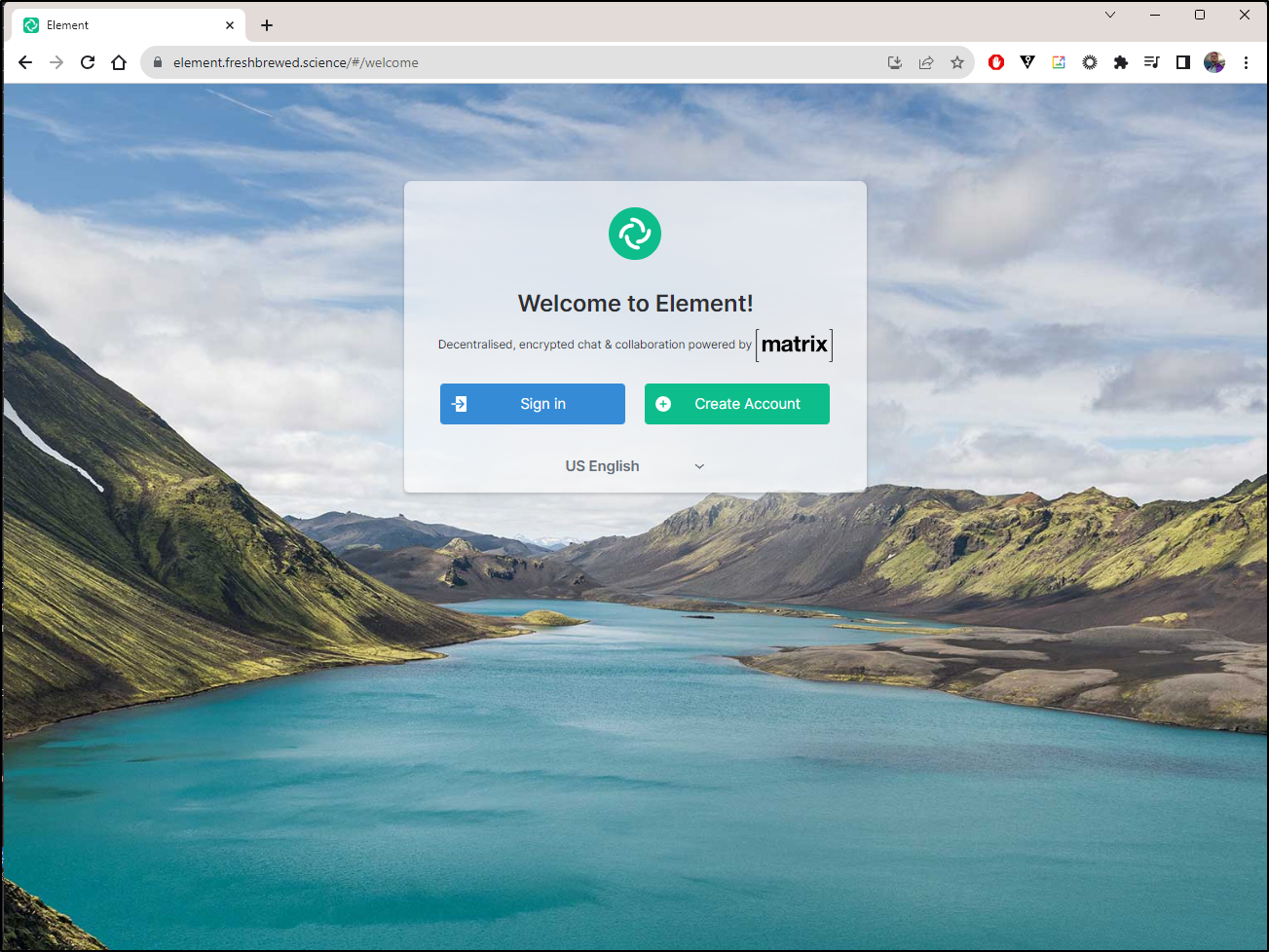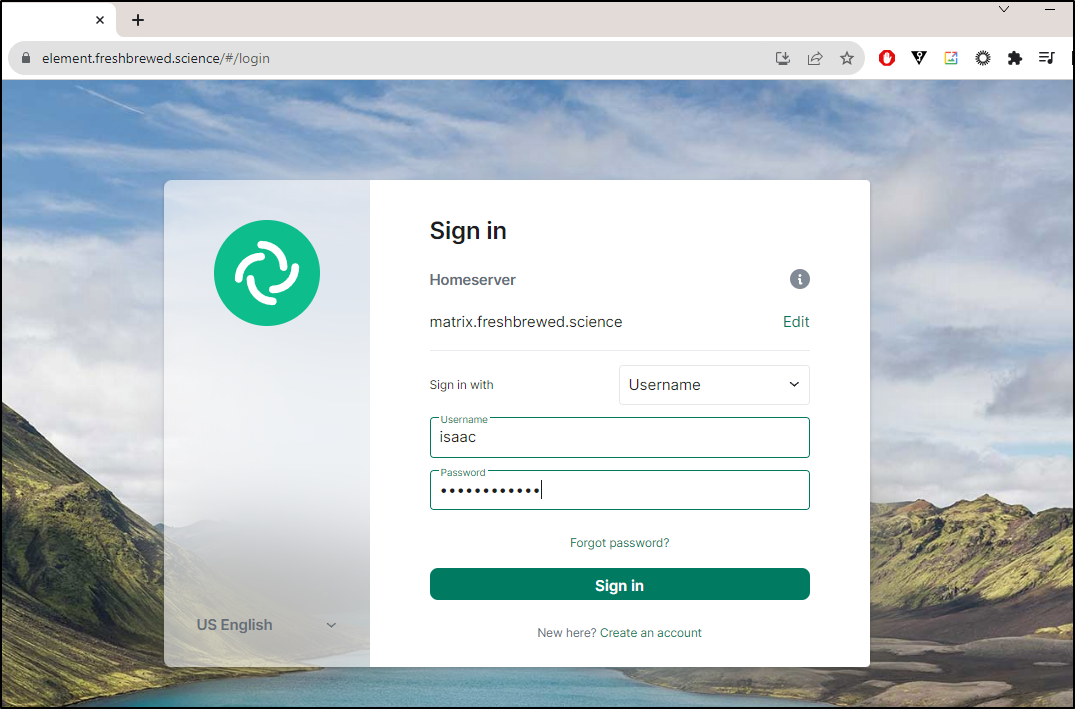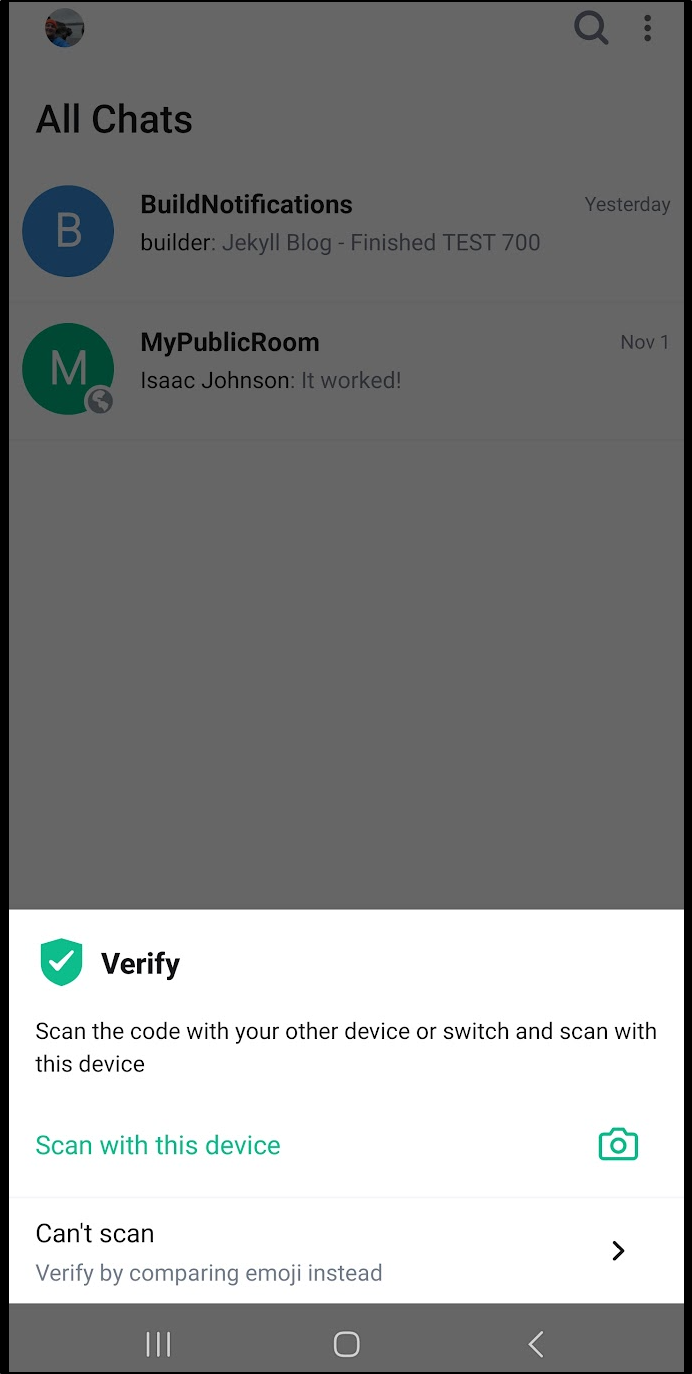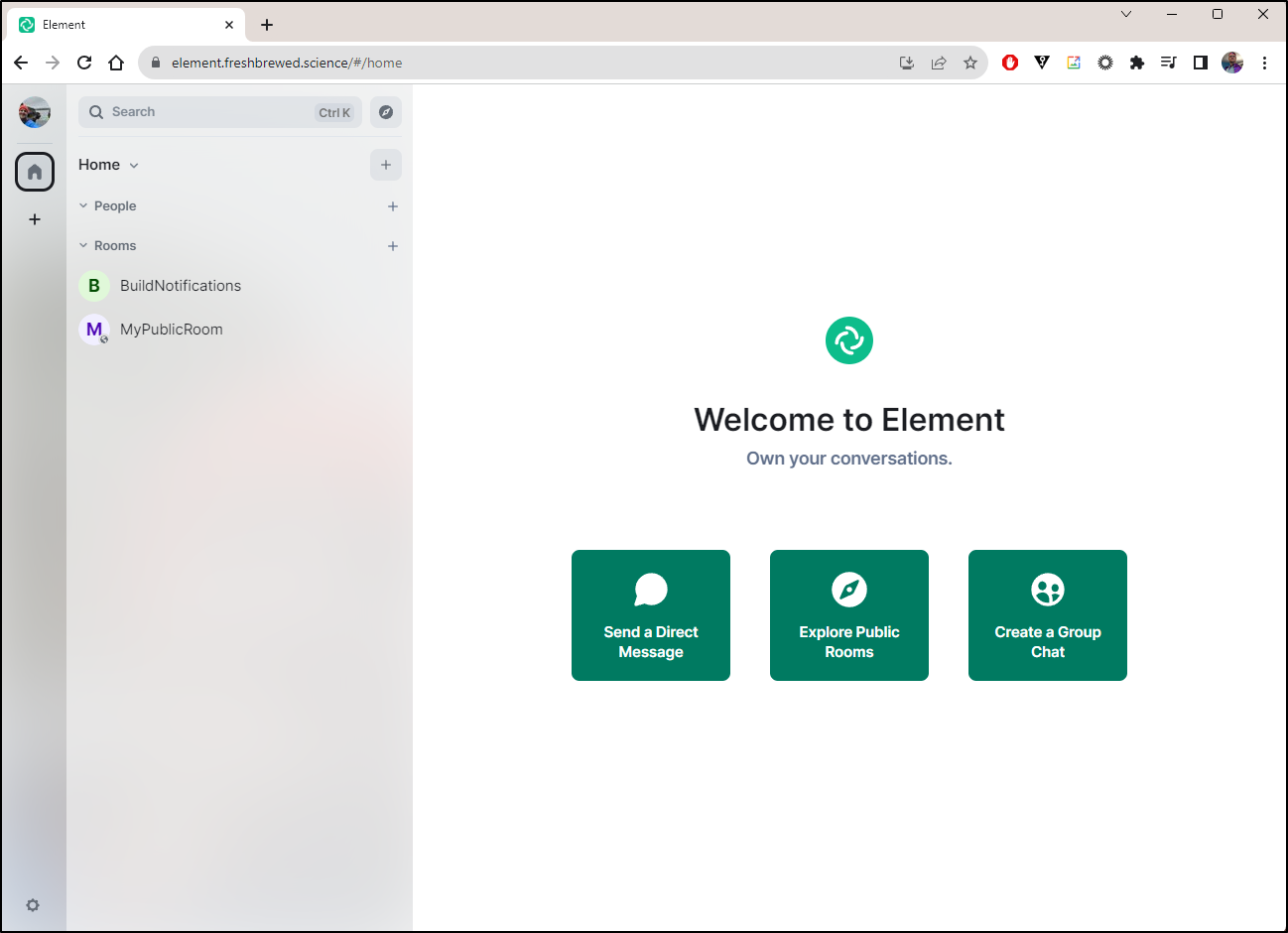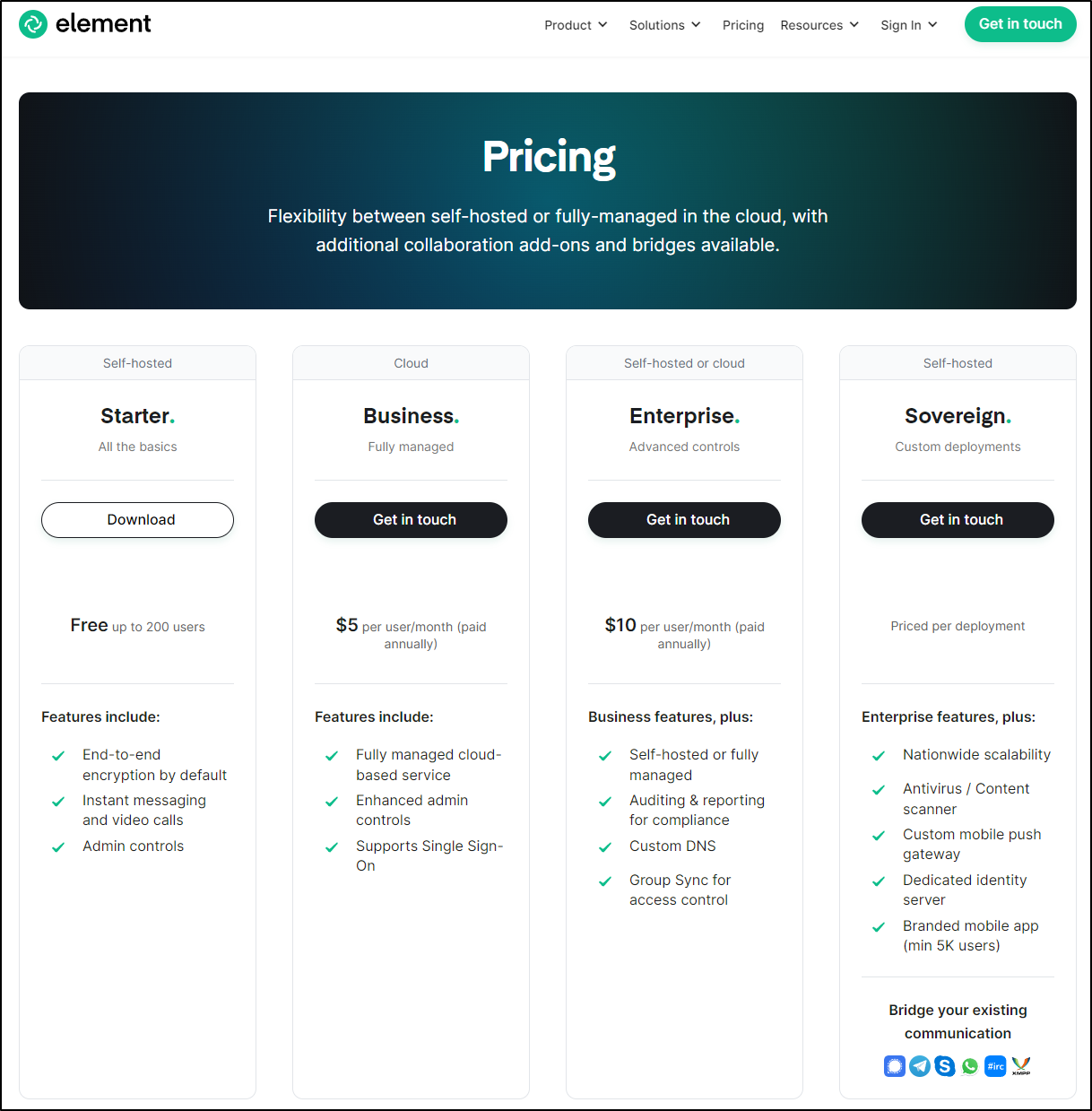Published: Nov 14, 2023 by Isaac Johnson
Element is already the client I use in Android. However, they have Clients for all OSes, including a self-hosted one that includes running in Kubernetes.
Element Web
I’ll need an A record for NGinx and TLS, so let’s take care of that first
builder@DESKTOP-QADGF36:~/Workspaces/jekyll-blog$ cat r53-element.json
{
"Comment": "CREATE element fb.s A record ",
"Changes": [
{
"Action": "CREATE",
"ResourceRecordSet": {
"Name": "element.freshbrewed.science",
"Type": "A",
"TTL": 300,
"ResourceRecords": [
{
"Value": "75.73.224.240"
}
]
}
}
]
}
builder@DESKTOP-QADGF36:~/Workspaces/jekyll-blog$ aws route53 change-resource-record-sets --hosted-zone-id Z39E8QFU0F9PZP --change-batch file://r53-element.json
{
"ChangeInfo": {
"Id": "/change/C09728111XHO3ELZ2CVRY",
"Status": "PENDING",
"SubmittedAt": "2023-11-04T13:25:09.439Z",
"Comment": "CREATE element fb.s A record "
}
}
I can then create a namespace, configmap and deployment in one fell swoop. I used the exmaple here.
---
apiVersion: v1
kind: Namespace
metadata:
name: element-web
---
apiVersion: v1
kind: ConfigMap
metadata:
name: element-config
namespace: element-web
data:
config.json: |
{
"default_server_config": {
"m.homeserver": {
"base_url": "https://matrix.freshbrewed.science",
"server_name": "matrix.freshbrewed.science"
},
"m.identity_server": {
"base_url": "https://vector.im"
}
},
"disable_custom_urls": false,
"disable_guests": false,
"disable_login_language_selector": false,
"disable_3pid_login": false,
"brand": "Element",
"integrations_ui_url": "https://scalar.vector.im/",
"integrations_rest_url": "https://scalar.vector.im/api",
"integrations_widgets_urls": [
"https://scalar.vector.im/_matrix/integrations/v1",
"https://scalar.vector.im/api",
"https://scalar-staging.vector.im/_matrix/integrations/v1",
"https://scalar-staging.vector.im/api",
"https://scalar-staging.riot.im/scalar/api"
],
"bug_report_endpoint_url": "https://element.io/bugreports/submit",
"defaultCountryCode": "GB",
"show_labs_settings": false,
"features": { },
"default_federate": true,
"default_theme": "light",
"room_directory": {
"servers": [
"matrix.org"
]
},
"enable_presence_by_hs_url": {
"https://matrix.org": false,
"https://matrix-client.matrix.org": false
},
"setting_defaults": {
"breadcrumbs": true
},
"jitsi": {
"preferred_domain": "meet.element.io"
}
}
---
apiVersion: apps/v1
kind: Deployment
metadata:
name: element
namespace: element-web
spec:
selector:
matchLabels:
app: element
replicas: 1
template:
metadata:
labels:
app: element
spec:
containers:
- name: element
image: vectorim/element-web:latest
volumeMounts:
- name: config-volume
mountPath: /app/config.json
subPath: config.json
ports:
- containerPort: 80
name: element
protocol: TCP
readinessProbe:
httpGet:
path: /
port: element
initialDelaySeconds: 2
periodSeconds: 3
livenessProbe:
httpGet:
path: /
port: element
initialDelaySeconds: 10
periodSeconds: 10
volumes:
- name: config-volume
configMap:
name: element-config
---
apiVersion: v1
kind: Service
metadata:
name: elementsvc
namespace: element-web
spec:
selector:
app: element
ports:
- name: default
protocol: TCP
port: 80
targetPort: 80
---
apiVersion: networking.k8s.io/v1
kind: Ingress
metadata:
annotations:
cert-manager.io/cluster-issuer: letsencrypt-prod
kubernetes.io/ingress.class: nginx
kubernetes.io/tls-acme: "true"
nginx.ingress.kubernetes.io/proxy-read-timeout: "3600"
nginx.ingress.kubernetes.io/proxy-send-timeout: "3600"
labels:
app.kubernetes.io/instance: elementingress
name: elementingress
namespace: element-web
spec:
rules:
- host: element.freshbrewed.science
http:
paths:
- backend:
service:
name: elementsvc
port:
number: 80
path: /
pathType: Prefix
tls:
- hosts:
- element.freshbrewed.science
secretName: element-tls
---
I’ll now apply it
$ kubectl apply -f elementweb.yaml
namespace/element-web created
configmap/element-config created
deployment.apps/element created
service/element created
ingress.networking.k8s.io/element created
I can now see the app running
One thing I love is that when I sign in
There is a back and forth verification (similar to keybase) that requires me to auth on another device
Once I scan a QR and confirm, then I confirm similar images
and I’m then allowed in.
I now have a “front door” for Matrix Synapse running in the same cluster.
Pricing
Element, while fully Open-Source, does have managed offerings as well. For those looking for hosted option, they have a “Business” tier at $5/user/month, an “Enterprise” at $10/user/month and a “Sovereign” version that would add in AV, a branded mobile app and briding to other communications systems
https://github.com/vector-im/element-web


